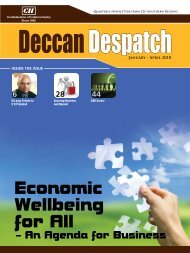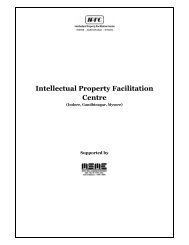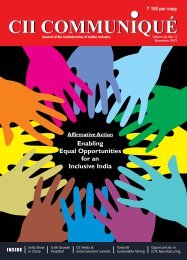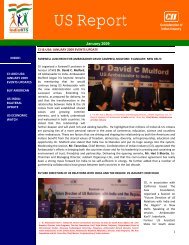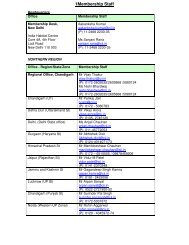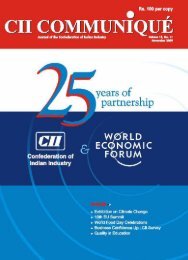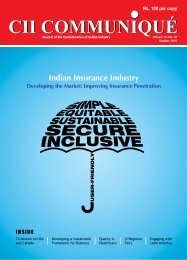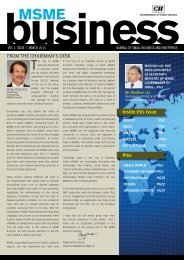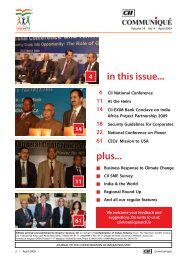You also want an ePaper? Increase the reach of your titles
YUMPU automatically turns print PDFs into web optimized ePapers that Google loves.
policy pulsesupply. Demand will go up because of increase in incomelevels and spread of education and supply will be augmentedby removal of process bottlenecks and boost in infrastructureinvestments.While some of the above trends can already be observed today,many are yet to break the existing paradigms. In addition,the confluence of many of these change drivers—consumers,technology, government policy, channel partners—will have amultiplier effect and magnify both the magnitude as well as thepace of change. As with any change that is disruptive in nature,there will be winners and losers. This transition from a stable andhomogenous operating model to a dynamic, unpredictable andrapidly changing operating model will have significant implicationsfor the industry and its stakeholders.To excel in this new model one will need to enhance current capabilitiesand build new ones to bridge gaps. In this new setup, FMCG companieswill have six imperatives from a business strategy perspective:1. Disaggregating the operating model2. Winning the talent wars3. Bringing sustainability into the strategic agenda4. Re-inventing marketing for ‘i-consumers’5. Re-engineering supply chains6. Partnering with modern tradeStakeholders including government, retailers, NGOs, and investorswill also need to play a key role in supporting the growth of theindustry, while continuing to deliver on their core business andsocial mandates. In conclusion, the FMCG sector in India is poisedfor rapid growth in the next 10 years. Companies will need toevolve to better meet the rapidly changing consumer needs withinan increasingly complex operating environment. The FMCGindustry in 2020 will be larger, more responsible, and more tunedto its evolved customers.(This is an executive summary of the report of the report on “FMCG Roadmapto 2020- the game changer” released at <strong>CII</strong> FMCG Forum 2010 on 8November 2010”)— ¤ —Discussion on Agri Policy of Rajasthan31 December 2010, JaipurA meeting of the Task Force to prepare Agriculture Policy of Rajasthanwas attended by Mr R K Meena, Principal Secretary, Agriculture,GoR; Mr J C Mohanty, Commissioner– Agriculture, Government ofRajasthan (GoR); Mr Umesh Kumar, Administrator, Rajasthan StateAgriculture Marketing Board; Mr Rajesh Sharma, Director, AnimalHusbandry and Mr S G Vyas, Vice Chairman <strong>CII</strong> Rajasthan.Key Points of discussion:1. Integrated Pest Management (IPM)Integrated Pest Management (IPM) practices should be popularizedto ensure that pests, diseases & weeds do not destroy the crops.This would also ensure proper, safe and judicious use of chemicalpesticides. Special emphasis on use of bio-pesticidesand use ofrelevant traditional practices.2. Land ReformsOne major challenge of agriculture is fragmented landholdings due to which investments in technologies, such as farmmechanization, drip irrigation and use of high quality inputs suchas seeds, fertilizers & pesticides becomes increasingly difficult.Therefore, it is important to draft and implement a Farm LandLeasing Law which may allow cooperatives, NGOs, private firmsetc. to lease the contiguous small farm lands for a 15-20 yearperiod from the farmers without any change in ownership.The policy must strongly recommend the computerization of allland records, especially in the rural areas and try and settle allthe litigations / disputes for more effective land utilisation foragriculture.Karnataka has also done this with tremendous success.3. Water management including dry landagricultureA detailed plan for the construction of check dams and waterpercolation ponds should be prepared to help raise the watertable of the state.A full scale program should be drawn up for the regular upkeep,repairs and maintenance of irrigation canal and systems to ensuretheir efficient use.— ¤ —f e b r u a r y 2 0 1 117



